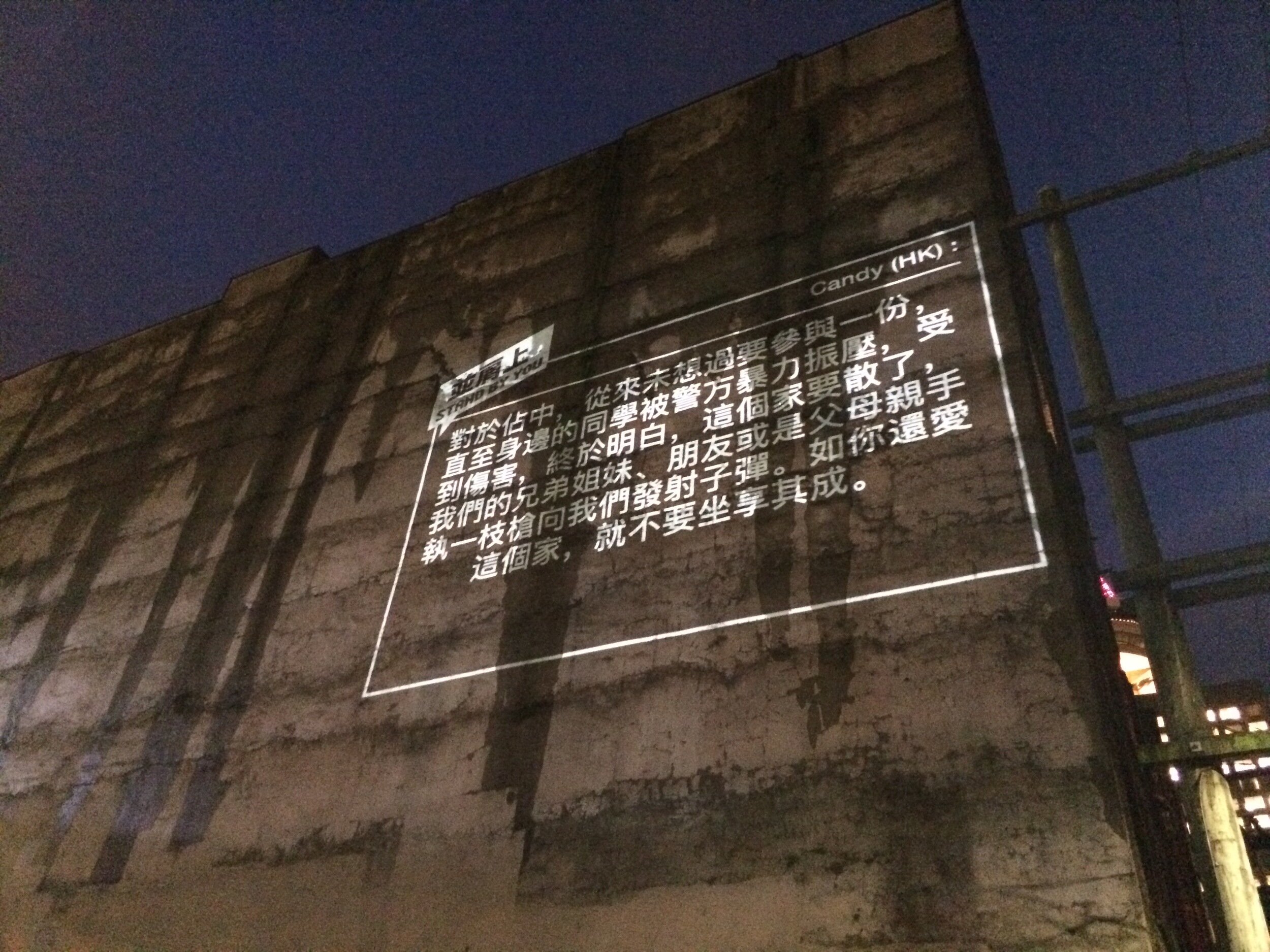
Add Oil Machine 打氣機
An online exhibition about the Hong Kong Umbrella movement (2014)
"Add Oil Machine 打氣機," an online exhibition about the Hong Kong Umbrella movement (2014) and the revolutionary potential of language and collective enunciation. Organized by Slought Foundation in collaboration with the Add Oil Team, this virtual exhibition seeks to spread awareness about the power of individual and collective assemblage and the formation of community and solidarity through art. It thus raises questions about archivization and historicisation, and how institutions record and display protest movements and cultural resistance.
This exhibition launched on December 10, 2015 at Slought Foundation, University of Pennsylvania, Philadelphia and at Centre A in Vancouver, Canada, where it took the form of an outdoor projection and installation.
To what degree can the concept of minor literature be translated across languages, cultures, and places? "Stand By You: Add Oil Machine 並肩上: 打氣機" provides us with an opportunity to explore its applicability to the language of protest, and in particular protest in minor Chinese languages. A majority of the messages of solidarity were written in 廣東話 Cantonese, the primary language in Hong Kong yet one that is secondary to 普通話 Mandarin, the standardized Chinese dialect spoken in Mainland China, Taiwan and Singapore. Cantonese people are often compelled to explain themselves in Mandarin to be understood in Mainland China and other parts of Asia, such that using Cantonese in everyday life is an affirmation of one's minoritarian cultural identity and sense of community. This project thus invites us to interrogate the politics of and relationship between Cantonese and Mandarin. Here political messages in Cantonese, a minor language, are being projected onto governmental sites of power whose association with Mandarin and Mainland China is precisely what is being contested.
Press Coverage:
Hong Kong Exile Hyperallergic Wall Street Journal


